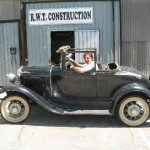Ask the Experts – What’s Needed When Building a Home Recording Studio?
Home recording studios have taken off in Southern California. So many music professionals, recording engineers, bands, instrumentalists, singers, and even voiceover actors have decided to eliminate hours of highway traveling to other studios and have their own studio at home. That, of course, meant they had to do some home remodeling. So, let’s talk about the requirements for a little (or large) home recording studio remodel job.
Choosing a Room
First, you need a room. Sometimes this isn’t as easy as first thought. Maybe a spare bedroom is available and ideal. But maybe you need to use part of the basement or even the garage. You need a space that is away from main traffic areas and is either on the concrete slab or can have its floor and walls opened up so sound absorbing materials can be added. Deadening ambient noise from all directions is vital.
You must be sure there is enough room for a recording space, a control room, separation between them, equipment, having room to move, possibly even creating an isolation booth, or even a waiting/reception area if you rent the space out to other artists. Do you need to use two rooms for the remodeling? So many decisions and considerations.
How will it work for electrical connections? A studio uses more power than a regular room. Rewiring will have to take place. Likely you will need extra circuits and lighting added, as well as surge-proofing everywhere. This is where you must discuss building a home recording studio with professionals and likely get planning permission from local authorities. The right contractor will do it all for you as part of the service.
Some Mistakes to Avoid
- Don’t build “blind”. This is not a project for having a general plan and figuring it out along the way. Not only must the entire studio be drawn up in detail, you also must know precisely how you like to work in a studio setting and design it accordingly.
- Don’t DIY. Unless you are an expert in both construction and studios, there are too many potential pitfalls and details. Before the equipment is in, do you know the precise placement and angle of lighting for seeing important things? Are you going to mount speakers and amps? Do you know the amps and wattage needed for each circuit? Do you know how to rewire according to code? Have you drawn up where and how cables will flow?
- Don’t buy equipment first. Your recording equipment must fit the space available. And so far, you don’t know the exact space available because detailed plans need to be drawn up. If you want to remodel a bedroom, understand that the room will change and so will dimensions. For example, the distance between some walls will “shrink” when sound absorption, lighting and cable conduits are added.
- Don’t just get “studio foam”. The basic stuff dampens mid to high range reflection but does little for the bass frequencies.
Get a Turnkey Solution
Although it may sound like promotional hype, you will truly save yourself time, hassle, stress and money by choosing a contractor with proven success in designing and remodeling home recording studios. If that contractor offers a turnkey service, even better. From drawings to final details, everything will be done thoroughly and systematically. All your equipment will be installed, tested and ready to operate. Then you can get on with what you do best in your new home recording studio.
 “Romney Tripp started construction in 1977 and formed RWT Design & Construction in 1992, eventually setting up the shop in Burbank. From the mid 1980’s Romney has been working on building recording studios as well as…” Read more.
“Romney Tripp started construction in 1977 and formed RWT Design & Construction in 1992, eventually setting up the shop in Burbank. From the mid 1980’s Romney has been working on building recording studios as well as…” Read more.
Creative Commons Attribution: Permission is granted to repost this article in its entirety with credit to RWT Design & Construction.


No Comments
Sorry, the comment form is closed at this time.